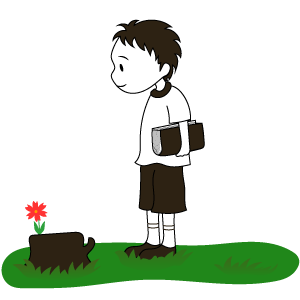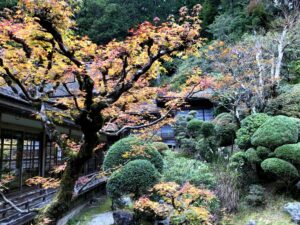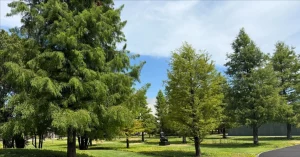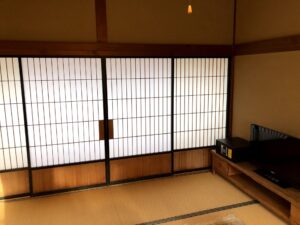When I was a child, I honestly did not understand the beauty of autumn leaves. I had no idea what was so beautiful about it. This feeling lasted until I was much older than I thought.
Scientifically speaking, the autumn leaves are the leaves that have lost their pigmentation, or in human terms, they have reached old age. It is natural to say so, but I am sure that it is hard for a child to look at them and think how beautiful they are. It is not so common to see elementary school students being fascinated by the autumn leaves.
However, as I grew older and gained more experience, I gradually came to appreciate the beauty of autumn leaves.
However, as I got older, when I saw mountains colored yellow, red, and orange, I began to feel sadness rather than beauty.
It was then that I met several deaths in a row of people close to me, and I could no longer listen to sad and sensational music. I could not accept sad melodies at all.
However, as time went by, my grief was healed and I was able to listen to such sad melodies, and then, strangely enough, I began to appreciate the beauty of autumn leaves again.
Perhaps it is because I have somehow come to understand that life itself is accompanied by an inescapable sorrow, and that it is precisely because of this sorrow that there is joy and pleasure.
It is the same with the sadness of the falling cherry blossoms. The sadness of a single leaf or a single petal falling off a cherry blossom.
I have come to realize that the true pleasure of enjoying the autumn leaves is to savor the sadness of nature’s transition together with the sadness of one’s own life.
According to one theory, the word “kari” (hunting) for viewing autumn leaves originated in the Heian period (794-1192), when it became popular for aristocrats to cut (trim) the branches of autumn-leafed trees and enjoy them inside their homes.
However, it is said that it was during the Edo period (1603-1867) that the autumn-leaf viewing became popular among the general public, so it may take several hundred years for this kind of aesthetic sense to take root in the general society.
For the common people of the Edo period, it was considered a natural phenomenon with a sense of sadness rather than beauty, and was not an object of great affection. In fact, even in tanka and haiku poems, there were not many poems about its beauty.
It is also true that the common people of the city were not in the mood to admire the autumn leaves in such a leisurely manner in the face of the severe, life-threatening winter. In modern Japan, however, enjoying the autumn foliage has taken root as a popular pastime.
This may be due to the fact that the Japanese people have a sense of beauty centered on “the mercy of things,” as Nobunaga Motooi said.
The seasons have four seasons and change their appearance day by day. And the year goes around. Some life disappears, and some life must be cut off (like trees falling leaves in order to survive the winter).
The beauty is not in dismissing the transition itself as something empty and sad, but in finding beauty in the sadness. I believe that there is a consciousness that sees the transition itself as beautiful. I think this is a unique and wonderful consciousness, even when viewed from a global perspective.
And I think it is connected to various Japanese cultural things. I think it is the same with the culture of trees that decay instead of being eternal, and (not being obsessed with things). I think it extends not only to the way people think but also to the way they act, both in a good way and a bad way.
Perhaps, just as a sense of beauty like that of autumn-leaf viewing, which was enjoyed only by a very limited privileged class, took root in the Edo period, we may see something that will attract renewed attention in the future.
I am not kidding…boating and…. Kemari….shellfish games. The aristocrats’ game, as described in the Tale of Genji, has developed into a leisure activity for a generation…or not.
In a world where economic growth is slowing down and the population is shrinking, it is good to enjoy the glamorous and enjoyable culture of foreign countries, but it is better to rediscover the aesthetic sense that was actually practiced in the past and remains faintly in people’s consciousness, and arrange it in a modern way.
At any rate, it was Nakamura who wants people to quit lighting up cherry trees and trees with autumn leaves, because the trees are pitiful.
See you later.












